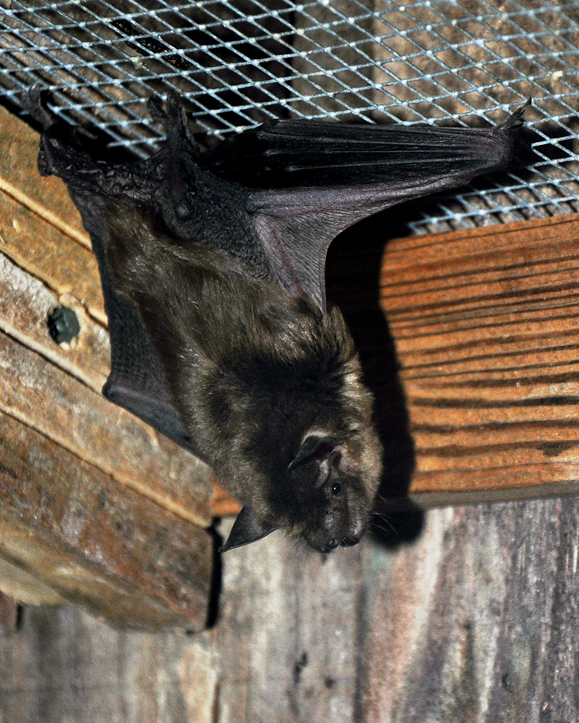Big Brown Bat
Category:
MammalsAbout


Big Brown Bat
Bats are the only mammals that can fly. They have tiny, thin wings that stretch from their forelegs to their hind legs to their tail. This ability earned them the scientific name Chiroptera, which means “hand-winged.” One of the 13 species of bats that live in Virginia is the big brown bat (Eptesicus fuscus).
The big brown bat belongs to the Vespertilionidae family, the most common bat family in North America. Like all bats, the big brown bat is nocturnal and is rarely found in daylight. They can occasionally be spotted during the day, inhabiting an array of rural and urban areas, building their homes in tunnels, caves or hollow trees. They also will reside in man-made structures if available, including barns, attics and churches. They prefer these low-light areas not just because they sleep during the day, but also due to their cool temperatures.
The big brown bat looks just like its name, big and brown. The average length of the common bat is about 3.8 inches long, but the big brown bat can grow as long as 4.8 inches. It has a wingspan of 12 inches and weighs between 0.4- 0.6 ounces. Its sepia brown fur covers its entire body, except for its face, ears and wings, which are black.
Though they are rather solitary creatures, big brown bats are unfazed by loud noises and crowds. They have been spotted catching flying insects at dusk in populated areas of many cities. Due to their poor eyesight, bats must use echolocation to catch insects. This means they send out high-pitch sounds (too high for humans to hear) that echo off objects and bounce back to the bat. Using this tactic, the bat’s large, well-developed ears can determine how far away the prey or object is and in which direction it is located. Common prey for bats include wasps, flying ants, houseflies, leafhoppers and large beetles. Generally bats will swoop over and catch insects in their mouths. But they can also snare or capture insects within their wings. Bats hunt over water and land, and generally do so in the evening, night or early morning.
During the winter months big brown bats are almost completely inactive. They are true hibernators. They will go months without eating, and as a result burn off all of the fat their bodies contain. Bats generally hibernate in areas, like caves, where temperatures are cool and stable. Bats’ body temperatures cool off when they are inactive so they need a steady climate while they hibernate. During these inactive periods bats will hang upside-down by their feet with their wings wrapped around their bodies. Big brown bats are among the last type of bats to enter hibernation, waiting as long as December.
Though bats have very few predators their populations are on the decline. Bats are either always quickly flying or well-hidden which makes them a challenge for predators like owls, hawk, raccoons and snakes to catch. However one of their greatest threats is mankind.
Many people dislike bats, believing they carry diseases, are dirty and try to attack people. The truth is bats are not aggressive creatures. Like most animals, they will only show aggression if they feel threatened and need to defend themselves. Additionally, bats carry no more diseases than any other warm-blooded species. Ironically, the only major disease that bats face is the result of mankind. This disease is called white-nose syndrome. A fungi found in Eurasia was brought to North America by humans. This fungus, Pseudogymnoascus destructans, gets onto the skin of bats and damages their hydration and hibernation patterns. Many bats will wake up during their winter hibernation and leave their location in search of water and food. This causes them to use up much of their reserved fats and energy, ultimately leading to their death. However, this is not the only impact humans have made on the bat community.
Cave explorations and mining have destroyed bats’ homes. Insecticides have affected their feeding habits and the toxins in their prey can poison them when eaten. A decline in bat populations can greatly impact the environment because bats play a large role in controlling the populations of insects such as mosquitoes. With a decrease in bats comes an increase in insects around homes and gardens.
The average bat can live between five to ten years, with female bats generally producing only one young per year. This scarce breeding makes it challenging for this species to replenish its loss in population.





